On the heels of WLPC Phoenix 2023
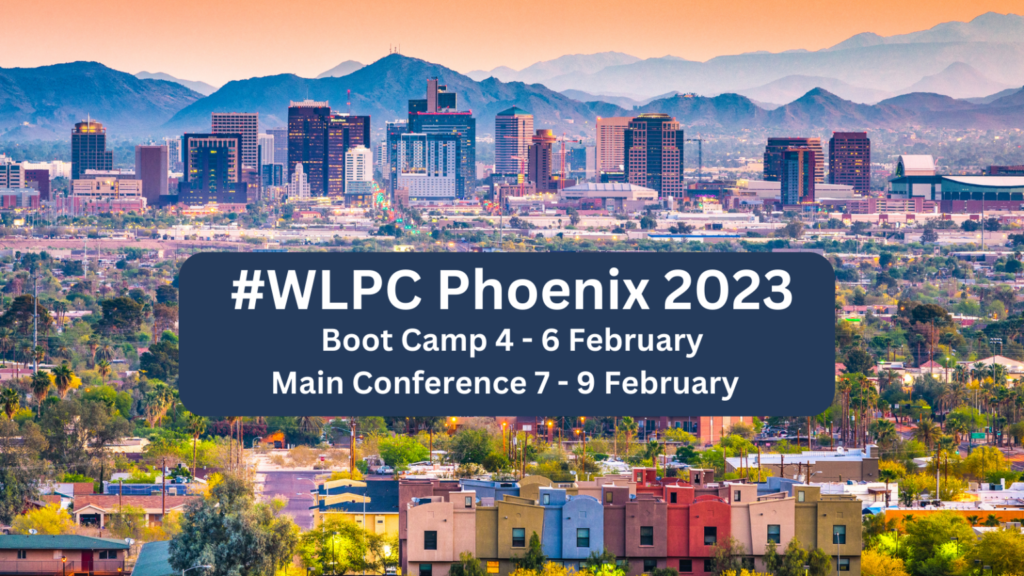
First, a few initial thoughts before jumping into sessions’ sound bites… WLPC 2023 introduced 20-min talks, giving speakers more time to go deeper into their topic and share more data. As all talks were voted on by the community, there was already a hunger to hear more about these specific topics.
A few themes coursed through the conference talks and sessions; there were several talks focusing on WPA3, 6GHz, and RF design. Emphasis on RF design was not a surprise, but clearly the industry wants to get a better grasp on uptake and effectiveness of WPA3 and 6 GHz. As 6GHz has been available in the US since the spring of 2020, focus has now shifted to enabling Standard Power and the rollout of an AFC program. Many countries are looking to the FCC to finalize their AFC regulations before releasing their own regulations inspired by the US model.
WLPC has evolved into more than just a Wi-Fi conference. Wi-Fi is the common element that brings everyone together, but there is more to life that just Wi-Fi – this is a good thing. While the talks and training are excellent, WLPC also strives to include activities that bring groups of people together. Past examples of this have included coffee bean trading, yoga, retro video gaming, pub trivia nights, etc.
To maintain balance, WLAN professionals must be technically adept but also of healthy mind, body, and spirit. Let’s be honest, that Sidekick2 won’t walk itself across a 100,000 square meter warehouse – or at least not yet. Leveraging the well-stocked hotel fitness center, Ben Canning (@Bencanning87) hosted ‘hacking your health’ (@wehackhealth) in the mornings sponsored by Wi-Fi Training. In addition, there was a morning hiking group ascending Piestewa Peak (described on AllTrails here).
I am setting a personal goal for next year – WLPC PHX 2024 – to participate in at least one early morning hike up to the top of Piestewa Peak and to rent a bike with Jim Vajda to join in on a few cycling adventures.
Thinking enough already, just show me a link to the WLPC video? Click below to go directly to The Wireless LAN Professionals Youtube Channel and look for WLPC Phoenix 2023:
https://www.youtube.com/@WirelessLANProfessionals/playlists
Evening Activities
Vendor sponsored sessions, hosted in the evenings, allowed vendors to demo their products and deliver sanctioned sales and marketing pitches. As these sessions are a completely optional part of WLPC, food, drink, and swag are used to compensate attendees for sitting through a sales pitch. There was a mix of the usual suspects – Aruba, Ventev, 7Signal, and others. I was glad to see all of them, but there were some unexpected players that stood out. NetGear hosted an event, handing out lots of free gear to attendees, getting their hardware into the hands of WLAN professionals. OpenWiFi hosted a session to promote and gain supporters of their initiative with representation from TIP. In traditional style, showing off the flexibility of the WLPC organizers, Ekahau sponsored a last-minute event with LEGO building. Lastly, Phil Morgan (@CCIE5224) hosted a BoF for those interested in the possibilities of Flipper Zero and Pwnagotchi.
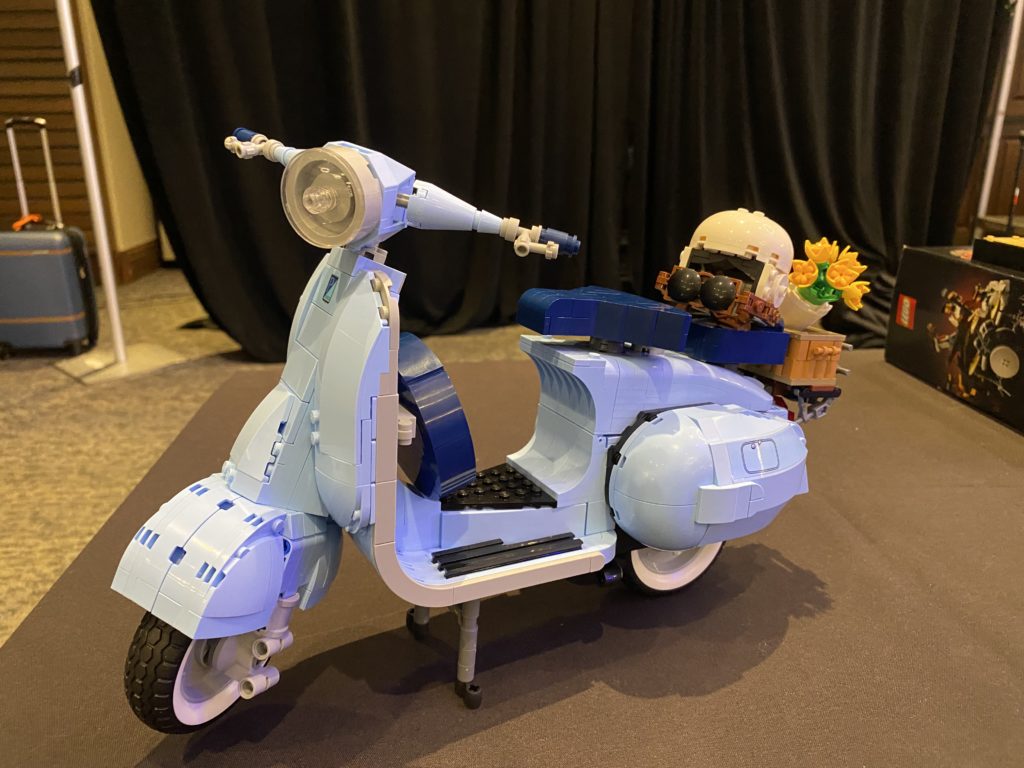
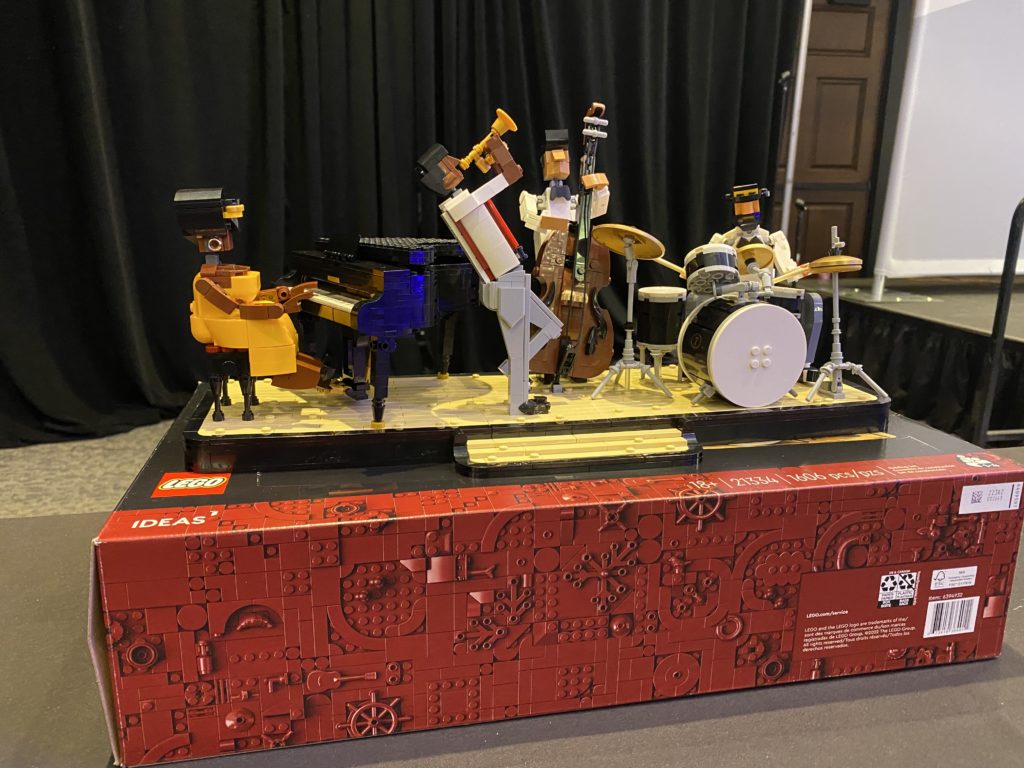
Bootcamps
I’m a firm believer that one of the best values for corporate training dollars is preloading the WLPC conference with a 3-day bootcamp. With many bootcamp options this year, a record number of attendees took action and signed up. Choices included classes from: Ekahau (Design or Troubleshooting), Wi-Fi Training (Rockstar Wireless Analysis or Cisco 9800 Rockstar ILT), and NC-Experts (Advanced Security) to mention a few.
If you ever wanted to dive into the deep end of the Python pool, Python for Wireless Engineers taught by Jake Snyder (@jsnyder81) and Ryan Adzima (@radzima) is the best class a Wi-Fi professional can take for in-person learning with labs and exercises directly applicable to your real world requirements.
You can see the full list of classes below, but the real bootcamp gem was the Building and Automating your own LoRaWAN Network bootcamp – delivered by Raymond Hendrix (@raymondhendrix) and myself (@troymart) 😉.
| Bootcamp Title | Instructor(s) |
|---|---|
| CWAP (CERTIFIED WIRELESS ANALYSIS PROFESSIONAL) | Peter Mackenzie |
| CWNA (WI-FI ADMINISTRATION) | Martin Ericson |
| ECSE DESIGN | François Verges |
| ECSE TROUBLESHOOTING | Scott McDermott |
| RUCKUS CERTIFIED WI-FI ASSOCIATE BOOTCAMP | John Deegan |
| ROCKSTAR WIRELESS ANALYSIS | Rasika Nayanajith |
| BUILDING AND AUTOMATING YOUR OWN LORAWAN NETWORK | Raymond Hendrix Troy Martin |
| ADVANCED WI-FI SECURITY BOOTCAMP (REAL-WORLD DEFENSE AGAINST THE DARK ARTS) | Phil Morgan |
| CISCO 9800 ROCKSTAR ILT | Chris Avants |
| WI-FI ADJUSTER COURSE | Devin Akin |
| PYTHON FOR WIRELESS ENGINEERS | Jake Snyder Ryan Adzima |
Day 1
Day 1 started with a welcome message from Keith Parsons (@KeithRParsons). He shared conference stats such as 40% were attending WLPC for the first time. 20% of attendees were presenting or teaching during the deep dive/bootcamps. Jim Palmer (@WirelessJimP) hopped on stage to showcase some of the harshest environments in RF to deploy Wi-Fi. After discussing the harsh realities of layer 1, Jennifer Minella (JJ) (@jjx) walked us through best practices and migration strategies to best move the industry towards a WPA3 world. JJ is also the author of Wireless Security Architectures, which you should now be taking a pause to order on amazon, before coming back to continue reading this summary. Next up was Jussi (@JussiKiviniemi), to demo the recent enhancements to the Hamina design software and make announcements about hardware integration to enable surveys.
From here we jumped into the first round of 10-talks with a flurry of topics including Wi-Fi troubleshooting with Matt Clyburn. There is yet to be a Wi-Fi network deployed that does not require some form of troubleshooting. Gagan Mittal explained his company’s (Alethea Technologies) methodology for measuring VoIP quality of experience at scale. Ashish Bhatia (@bhatsy) described a Wi-Fi architecture with Zero Trust. Wes Purvis (@RealWesPurvis) delivered an update on Wi-Fi 6E experiences now that several large-scale deployments exist in the wild. Wes shared data highlighting behaviours of various clients when connecting on 6GHz-only WLANs vs multi-band WLANs. This first round of 10-talks concluded with a dynamic duo from Ruckus; Darrel DeRosia (@DarrellDeRosia) and John Deegan (@wifi_john) teased us with AFC details and the possibility of using multi-PSK with WPA3. Quickly summarizing both these talks – the FCC is not yet done with AFC – it’s currently an evolving process. With respect to WPA3, the patent lawyers have sealed the documents on what is apparently just a math problem waiting to be solved. Others will get there eventually, but until they figure it out, they will continue to claim it’s impossible.
In the afternoon, John Burke (@jburkessocial) presented on the complexities of stadium design. Phil Morgan (@CCIE5224) guided muggles on a tour of the present state of Wi-Fi security. Trent Cutler demoed a technique for intelligent packet captures using Tonic. Jatin Parekh (@JatinAirTight) guided us through a series of workflow charts and tables to help navigate customers through the decision making process to determine if they should spend money today on 6E or wait for Wi-Fi 7. The long answer is: it’s complicated. The short answer is: why delay when you can spend twice the money on two WLANs. Ttwice may be a conservative estimate according to some vendor insiders 😉 In the last talk of the day Adrian Granados (@adriangranados) of Intuitibits fame, shared updates on Wi-Fi Explorer Pro while also announcing significant updates to Wi-Fi Signal and a Windows version of Wi-Fi Explorer Pro to be released this summer.
Day 2
Day two started off with The Wi-Fi Awards recognizing companies, products, and individuals. Congratulations to all nominees and top marks to the winners in each category, summarized below:
| Award Category | Nominees | Winners |
|---|---|---|
| Company Leadership of the Year | Aruba Networks Hamina Wireless Juniper Networks Tech Field Day (Gestalt IT) Wi-Fi Training | Hamina Wireless |
| Product of the Year | AP45 (Juniper Networks) Catalyst Wi-Fi 6E APs (Cisco) EtherScope xXG 300 (NetAlly) nOversight 4 (Numerous Networks) Wi-Fi Explorer Pro 3 (Inuitibits) | Catalyst Wi-Fi 6E APs (Cisco) |
| Innovation of the Year | AI Pro (Ekahau) Network Planner (Hamina) Wireless Open Locate (HPE/Aruba) Wi-Fi Explorer Pro 3 (Inuitibits) M4 (WLAN Pi) | AI Pro (Ekahau) |
| Content Contribution of the Year | Dave Benham Ferney Muñoz Jiri Brejcha Rowell Dionicio Troy Martin | Ferney Muñoz |
| Keith R. Parsons Award | Adrian Granados | |
David Coleman (@mistermultipath), representing half of the dynamic duo behind the Sybex CNWA-108 Study Guides, ran through the new features of Wi-Fi 7, continually asking if the feature revealed heaven or a deadly sin. Features that are unlikely to be realized in production or just sound good on paper generate tons of customer confusions and contribute to countless hours spent by WLAN professionals explaining the reality of those fluffy features – definitely some deadly sins in Wi-Fi 7. Jerry Olla (@jolla) took us on a journey of the current state of the WLAN Pi and its various current iterations.
During breaks, attendees were treated with Marshmallows-on-a-Stick, subtlety reminding us to remember to freeze the AP during you APoS surveys:
Jim Vajda (@JimVajda) showcased real-world data with graphs showing the percentages of uplink frames using 1024-QAM vs other modulation techniques. Bryan Ward (@_bryan_ward_) told a cautionary tale about the impact of permitting mDNS traffic to run wild across local networks. Not all vendors implemented standard values and several client devices generated excessive amounts of mDNS traffic, flooding both wired and wireless networks. Mark Houtz (@marko_with_a_k) took us on a journey beyond Wi-Fi and into the realm of CBRS and LTE. Mark described data that is not normally available to end users but can be revealed by looking into the frames with the right hardware and software. Matt Hall shared a case study of the Wi-Fi deployment for the statewide school system in New Zealand, challenging attendees to name a larger deployment delivered over of tighter frame in the educational space. Muhrad Bhaidani (@mbhaidani) attempted to remove the bite from the bark, continuing the narrative of one of the main themes of the conference – Wi-Fi 7. Anubhav Gupta showed us how much power APs consume from a component level and the benefits that can be reaped by disabling unused hardware. (Unfortunately, disabling radios creates significant disruption to cell coverage and channel plans. The only way to make this work is to enable auto-RF features and intentionally trigger aggressive responses to a constantly changing RF environment. This dark side of dynamically powering down radios was not addressed during the presentation, but there was only 10 minutes.) Kelly Burroughs (@kellypburroughs) challenged us to imagine a world in which designers could import AutoCAD files into an RF design tool. This part was nothing new but continued the thought exercise by asking – what if we could add APs to RF design software and then export a CAD file with an AP layer included? I currently have customers who manually add AP locations to the CAD drawing to create a single source of truth. If the RF design tool industry could work toward this vision, it would certainly be well received by those lucky enough to have access to CAD drawings. Lastly, Raymond Hendrix (@raymondhendrix) detailed part two of his Grand Prix case study and the challenges of deploying high density Wi-Fi over a short period of time.
The Wi-Fi Alliance is certainly not new to the WLPC and has presented at past conferences. This year, a new President and CEO, Kevin Robinson, took some time to meet with a small group of attendees and also deliver a presentation expressing his desire to re-engage with the Wireless Professionals community, to gather their feedback, recommendations, and perspectives and to work together as we collectively continue driving Wi-Fi forward.

To kick off the theme for the afternoon, Matt Johnson spoke on the future and convergence of the Wireless Enterprise. Bob Friday (@wirelessbob) attempted to broker a world of peace between unlicensed Wi-Fi 7 and licensed cellular 6G. Before sailing off into the sunset and with strong praise, Bob mentioned that if OpenWiFi had been available at the time, he never would have developed on-prem devices and would have focused exclusively on cloud-based solutions.
If you have ever identified iOS or android devices as your “LCMI”, you’ll be happy to watch Ben Toner’s (@ben__toner) talk about the 10 essential Wi-Fi metrics that can be collected from mobile devices. Ben’s talk initially described how to gain access to metrics on both iOS and Android devices, using both macOS based software nOversight and the iOS native nOversight app. Ben then pivoted to describe 10 of his most used metrics on each of those platforms, and more importantly – referenced how to get them. But wait, there was one more thing, Ben also offered a nOversight discount for WLPC attendees – something I hope all WLPC attendees took advantage of. Karl Benedict made a first-time appearance to WLPC and delivered a fantastic talk on his WLAN design methodology and explained why AP placement matters using heatmaps and data to back it all up. Lastly after declaring part of the stage as British territory, Ian Tearle (@itearley) spoke to inspire those of us focusing only on Wi-Fi to branch out and learn how LTE 4G/5G works. There are many similarities between Wi-Fi and Cellular technologies. Knowing the strengths and weaknesses of each allows WIRELESS designers to choose the best technology for the design requirements.
Day 3
Day 3 started with the annual reminder from Sam Clements (@samuel_clements) to sign up on WiFiPros slack. Connecting on slack allows us to actively participate in long form, meaningful Wi-Fi discussions with focused topics on a moderated platform. The Wi-Fi magician, Peter Mackenzie (@mackenziewifi) showed us the best place to capture traffic if you wanted to see all MU traffic. Reiterating a bold statement Peter made several years ago, he backed up this claim again during his presentation – the best place to capture traffic is at the AP. Unfortunately, packet capture is not all rainbows and unicorns as Peter also highlighted some gotchas with AP packet captures. Peter Thornycroft ran through an overview of the AFC & standard power updates in the US. He was joined on stage with Sam MacMullan from Federated Wireless to explain what happens when an AP communicates with an AFC. Michael Lane (@redesrapidas) flew an FPV drone around the conference to capture video and pictures of conference attendees using his brand new DJI drone.
Sharan Mahadevan (@sdnmind) from Ruckus explained his lessons learned when deploying Sonos wireless speakers with wires, SonosNet, and Wi-Fi. Sharan included a bunch of debug and diagnostic commands to better understand what your Sonos network is doing. Mohammad Ali (“Ali”) (@malief46) delivered a talk comparing Data Rate vs Cell Size. With many data samples, Ali reaffirmed RF does not stop at cell boundaries and designs need to account for this. Ferney Muñoz (@Ferney_Munoz) took the stage to finally answer the question – how fast should you walk during a site survey. Ferney backed up his conclusion using data collected with APs setup at the salt flats of Utah, a football field, and a warehouse. François Verges (@VergesFrancois) shared a tool he developed to analyze collected survey data, publish it online, and make it available (as required) to everyone at the SemFio WiFi DevOps Survey Data Collector. Documentation for the Wi-Fi DevOps Survey Data Collector can be found here.
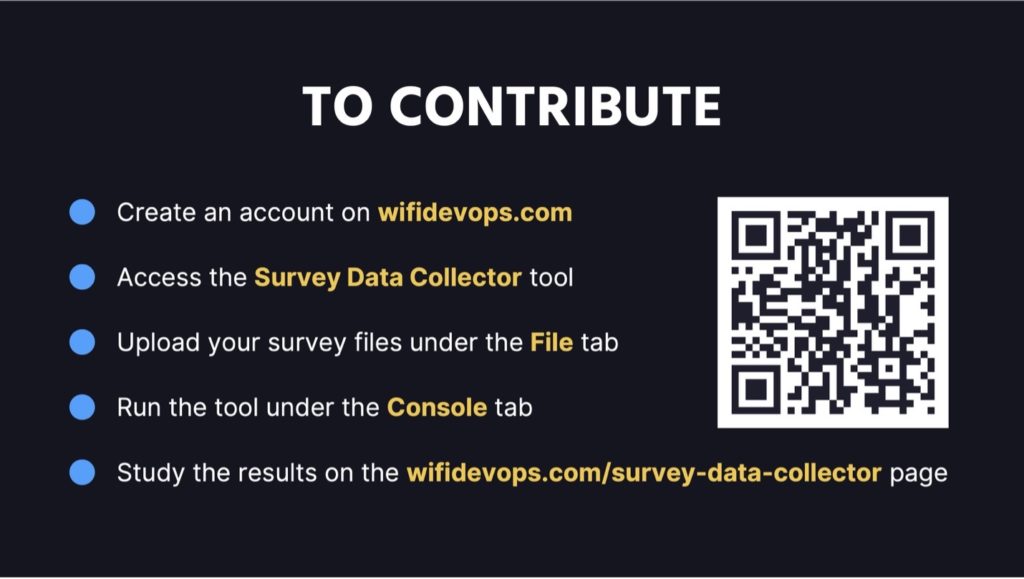
Next up was Jake Snyder (@jsnyder81) to talk about his crazy idea of #OpenIntent – a community driven schema to describe the data needed to deploy Wi-Fi access points. Sign-up here to participate in community meetings and contribute to the development of this schema. Jack Raynor from Meta updated us on the progress OpenWiFi has made recently with a lofty goal of implementing Wi-Fi standards the way they were meant to be implemented. Great wireless LANs result from the marriage of RF and Wi-Fi engineers. Landon Foster (@AceHighWifi) presented a case to preparing the next generation of Wi-Fi engineers by citing some ancient Philosophers and promoting mentoring with the goal to be the person you wish you had as a mentor. Eddie Ferrero (@HeyEddie) from CommunicaONEspoke about the good, the bad, and the ugly of… active surveys. TLDR… Eddie skipped the good (just kidding, Eddie ran through a several scenarios with specific contexts), sharing many stories about the bad and several more about the ugly. To wrap up the conference Lariana Luy (@larianaluy) spoke to us about the value of data. The more data, the better to help with visualization, analysis, prediction, detection, automation, and response.
Deep Dives
A common challenge with WLPC deep dives is that there are too many good ones to choose from. All attendees can sign up for a deep dive during conference registration. Each deep dive consists of ~6 hours of focused training split evenly over the first and second afternoons. Attendees are rewarded with deep technical learning and, perhaps more importantly, cool hardware to take home! Most deep dives have a limited number of seats and reach max capacity quickly. This and the fact that 80% of conference seats are sold on the first day registration opens are two more reasons to set you alarm and calendar reminders to sign-up as soon as the registration links go live.
Security and packet capture analysis garnered a lot of focus this year with four bootcamps covering these two topics from different perspectives. I may be a little biased, but the ‘piece de resistance’ was the Using a drone in your WLAN practice deep dive delivered by Mike Wade (@WirelessKahuna). Not only did attendees earn their US Recreational Flight registration, each attendee also received a DJI Mini SE in order to complete a series of flight missions and then take home.

Lastly, I would like to offer my thanks and appreciation for those who work tirelessly behind the scenes before, during, and after the conference to deliver an amazing experience.
Thank you to:
Keith Parsons (@KeithRParsons)
Mathew Castell (@MattyMcSteel)
Ferney Munoz (@Ferney_Munoz)
Tauni Odia (@tauniodia)
Sam Clements (@samuel_clements)
Manon (‘Mae”) Lessard (@Mae149)
Save the Date
The next WLPC conferences have been set with dates and location:
WLPC Medellín, Columbia Jul 29 – Aug 2, 2023
WLPC Prague, Czech Republic Oct 22 – Oct 27, 2023
WLPC Mexico City, Mexico Nov 13 – 15, 2023
I look forward to seeing many friends and familiar faces again soon!
Sláinte!
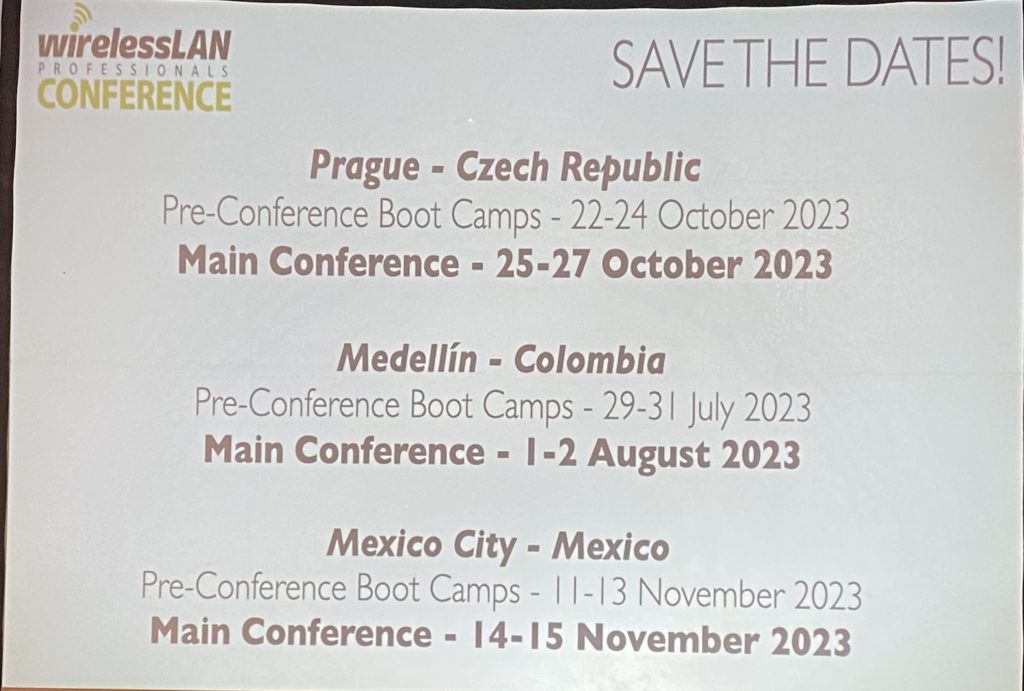
Resources
The Wireless LAN Professionals (WLPC) YouTube Channel
https://www.youtube.com/@WirelessLANProfessionals/playlists
The WLPC Phoenix 2023 Conference Website
The WLPC Phoenix 2023 Conference Agenda (may be useful for CE credits)
FCC conditionally approves 13 AFC systems for 6 GHz band via Fierce Wireless
https://www.fiercewireless.com/wireless/fcc-conditionally-approves-13-afc-systems-6-ghz-band
SemFio Wi-Fi DevOps Survey Data
https://wifidevops.com/survey-data-collector
OpenIntent GitHub
https://github.com/Google/openintent
Open Wi-Fi Project
Wireless Security Architectures – Authored by Jennifer Minella (JJ)